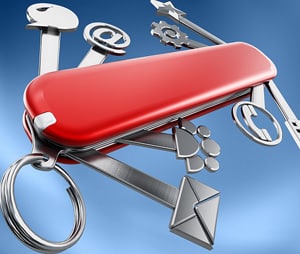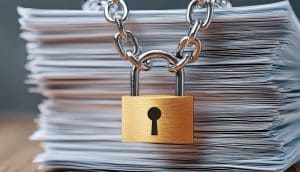
Norm Cowie, CCE
Director of Credit for Paramont-EO, Inc.
With an excited ‘I-just-got-candy’ look on my face, I slid the paper into the compartment made for either a single page or multiple. Excitedly, I punched some numbers into a keypad on top of the machine. There was a click, and the paper slid smoothly into the machine, got x-rayed or something else techy I didn’t fully understand and then emerged from another part of the machine.
Then I looked up at the tech. “That’s it? They got it now?”
He looked amused at my excitement, at least to the point that a tech nerd could get excited by something other than Dungeons and Dragons or whatever they played back then, and said, “No, not yet. You’ll receive a confirmation when it does.”
As if at his urging, the machine woke again, and a small half page of paper slid out of another paper sized opening in the machine. This paper was kind of slick and slightly curved, as if it had come from a big roll, which in fact is where it had come from.
He grabbed it, looked at it, nodded, and handed it over to me, “Yep, here’s your confirmation.”
That was my introduction to fax machines which would become such a large part of our communication system with customers, trade references and anyone else who had a fax machine. It didn’t take long for slime balls to learn they could use them for cheap advertising, and soon we’d be getting unwanted ads where we had to pay for the ink and paper to print ads for stuff we didn’t ask for or want.
Of course, I had a method for dealing with unwanted ads. I’d fax a note saying ‘do not solicit’ and depending on how angry I was, I’d send one to ten pure black pages to them which would eat up all of their ink.
But it’s weird to think how far technology has come since I began my career. It still boggles my mind I can put something in a machine next to me and the same thing prints out hundreds or thousands of miles away. There were limitations, though. I remember we learned that over time, a fax on that glossy rolled paper would gradually fade away. That was when we learned to make a copy of anything faxed to us, especially credit applications. We also would keep the fax transmittals stapled to the backs of papers to prove we sent something.
Ah, faxes.
I started in consumer finance, and our customer’s accounts were on thick paper with their amount financed, terms, interest and payments printed on one side, and our hand-written collection notes written on the back using abbreviations that meant something to us, but not to anyone else, like “pna,’ which meant ‘phone, no answer.’ That was before everyone had answering machines, and sometimes all you could do is phone, and let it ring. Then, depending on the circumstances, send a collection note by mail.
We’ve come so far since then, but I still don’t take advantage of all of the technology available to us. We still apply checks ourselves, even though there are programs that would do it automatically. We still call or email our customers, though we rarely do faxes anymore. If we had 80,000 customers instead of 800, I’m sure I’d be desperate for technology that would make things easier and keep us from an expanded workforce.
We do send our invoices through a source that emails, faxes or mails them depending on the customer’s wishes, and we are pushing for customers to pay by EFT or ACH, but that isn’t because of the technology as much as it reflects what we had to do when the mail became not as reliable anymore.
We all carry portable computer/communicators with us, in the guise of a cell phone, which is way more than the old cell phones we used to use, which well, would make phone calls. But nowadays, a phone is a map, a calculator, texting machine, music source, calorie-counter, camera, light source, alarm, timer, web source, pizza maker and many other things. Oh, and you can still make calls with it. Try going somewhere without your phone and you feel naked.
We get invitations from tech companies all of the time to try their stuff out. Our own computer program will do things we don’t even utilize, like tracking our lien rights for us. Sorry, I have my own system for that. I also keep track of all of the accounts on our NACM Connect Electrical Distributors Group reports. So, if an applicant applies with us, I’ll know not just the references they voluntarily give us, but also the creditors they didn’t. I track liens, suits and judgments the same way through Merritt Credit Bureau.
But I’m still old school, and I just can’t bring myself to go fully tech. And the results support it. Twice in the last five years, we wrote off zero bad debt, a third year we wrote off just $1400, and we’re on track this year for zero bad debt again (fingers crossed). We’ve written off under 4/100th of a percent of sales over the last half decade and not much more before that, and collect three times more in finance charges than we write off to bad debt.
So maybe it’s not so bad we don’t utilize every bit of technology we can get our hands on.
But I still don’t understand faxes.
(My award-winning book, MOONED is now available in hardcover. MOONED is a young adult book adults can read about a dog and cat turned into werehumans by their werewolf master. Fun action. Check it out on Amazon.)
Recent Posts
- The All Powerful and Influential Automotive Sector July 10, 2025
- Tariff Fatigue June 24, 2025
- Obtaining Financial Records from Hesitant Customers May 29, 2025
- What Happens Next? May 8, 2025
- Three Reasons to Ignore Recession Talk (and One Reason Not to) April 24, 2025
- Stability in Uncertain Times: Insights on Small Business Performance and Market Trends March 26, 2025











